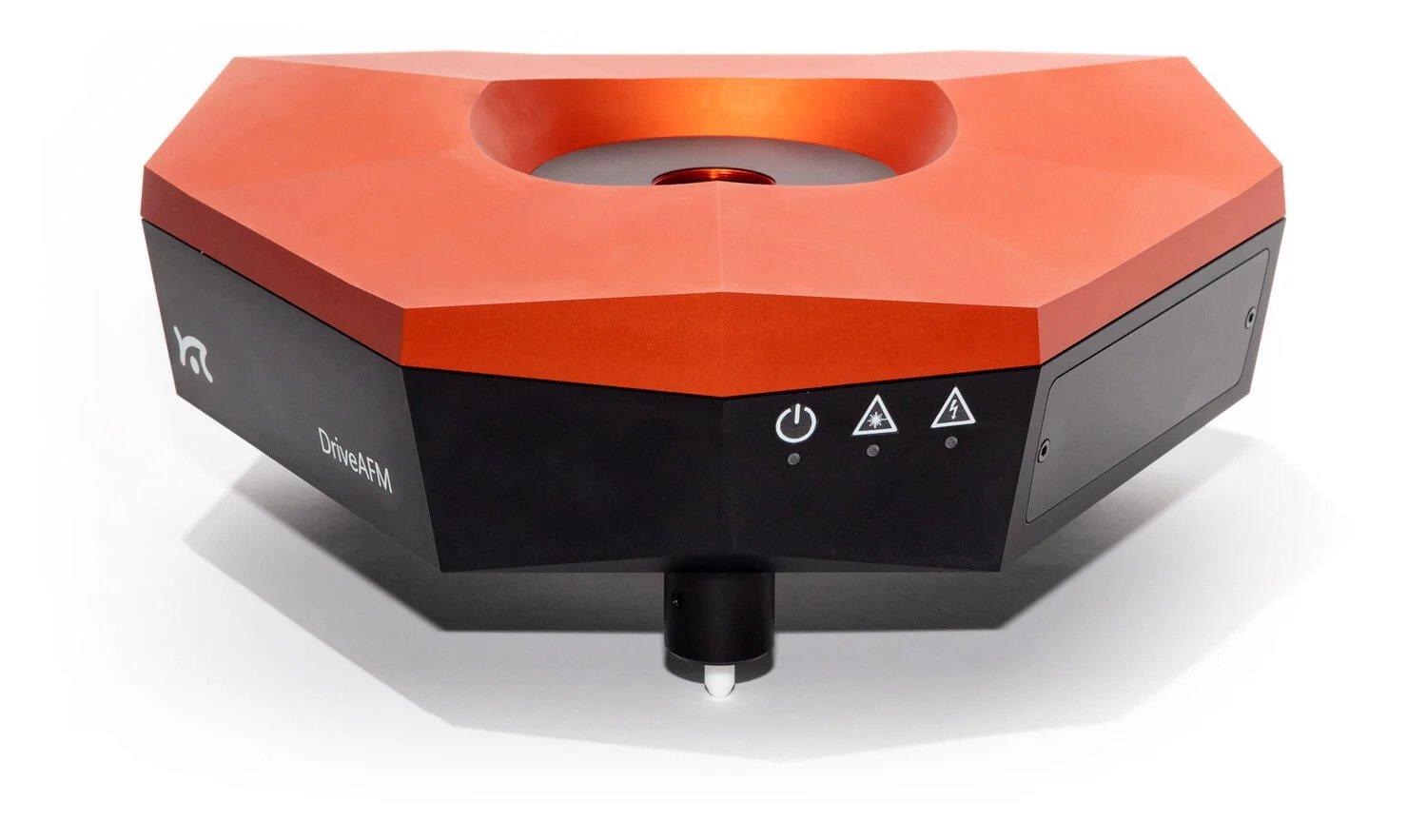Nanosurf, a global provider of scanning probe microscopes, has launched the DriveAFM — a high-performance tip-scanning AFM that incorporates innovative technologies. The DriveAFM was is designed to achieve high-resolution imaging while at the same time allowing researchers to measure large samples. The DriveAFM has an imaging envelope of 100 µm × 100 µm × 20 µm, with an optional 150-µm Z-extension.

The Drive AFM scan head
Image Credit: Nanosurf
Nanosurf’s CEO, Urs Matter, stated that “We are extremely proud of the DriveAFM, which is the culmination of several years of effort by our engineers, and our collaboration with leading research institutions around the world. We wanted to build the best tip-scanning AFM and I believe that is what we have achieved. I foresee the DriveAFM becoming the favourite instrument of many researchers in materials research, life science, and nanotechnology in general”.
Technologically, the DriveAFM is designed to deliver optimal performance by combining a low-noise/high-bandwidth controller, a low-noise super-luminescent diode for feedback, and a direct-drive scanner. Another unique feature is the CleanDrive — a photothermal method to actuate the cantilever. Photothermal excitation provides unparalleled stability, and a high excitation bandwidth in air and liquid environments. These benefits allow measurements at multiple frequencies and high-speed applications. The DriveAFM also boasts full system motorization: laser and detector alignment, tip approach and sample movement are all managed from the software. This not only contributes to the ease of use, but also allows new possibilities to fully automate the system.
James Berwick, Nanosurf’s head of sales added “The addition of the DriveAFM to our portfolio of instruments is expected to result in significant growth in the coming years. The performance of the DriveAFM will offer comparable performance, and in some modes exceed the best AFMs in the market today, and we expect to be going head-to-head with them in many competitive situations.”.